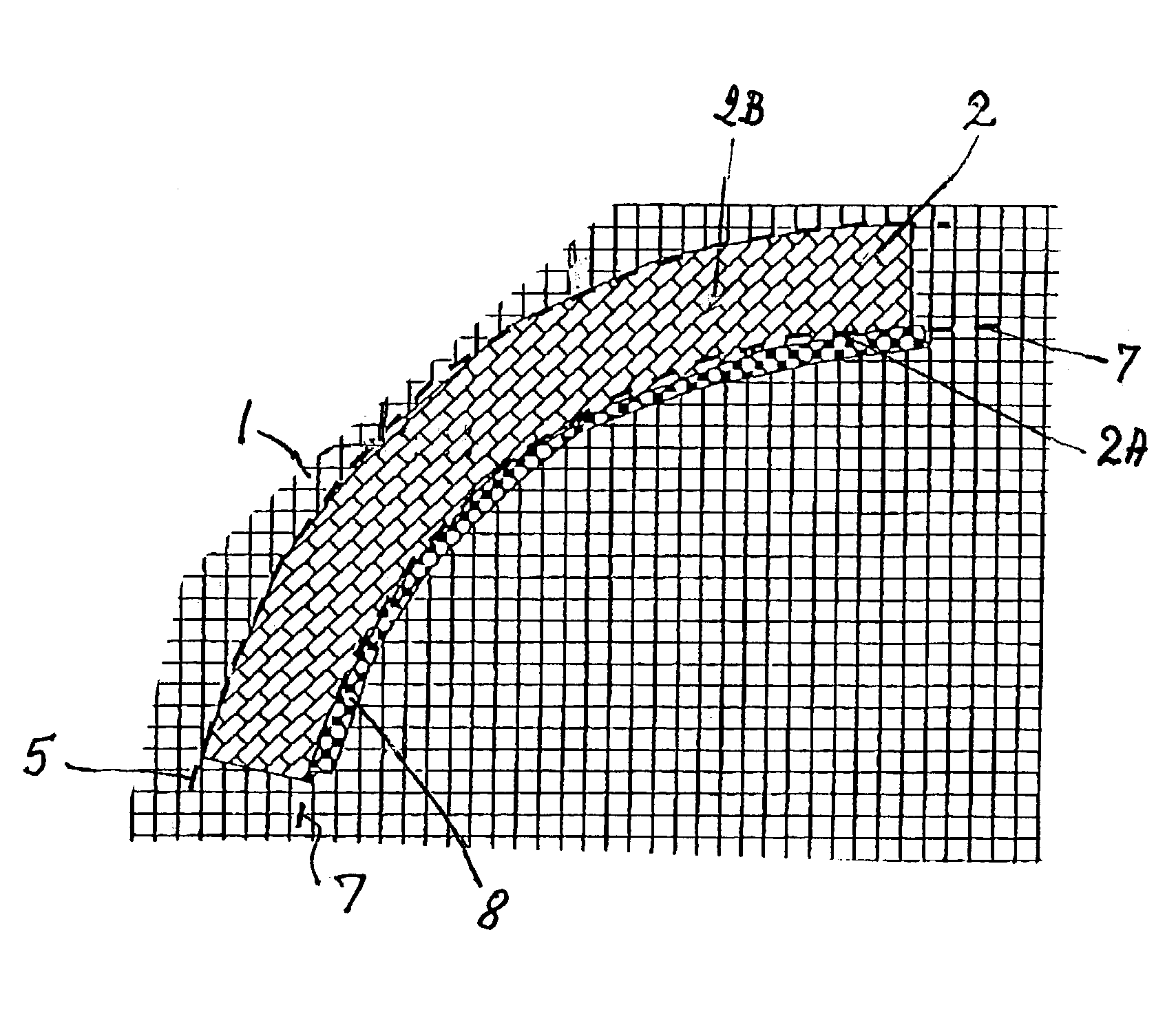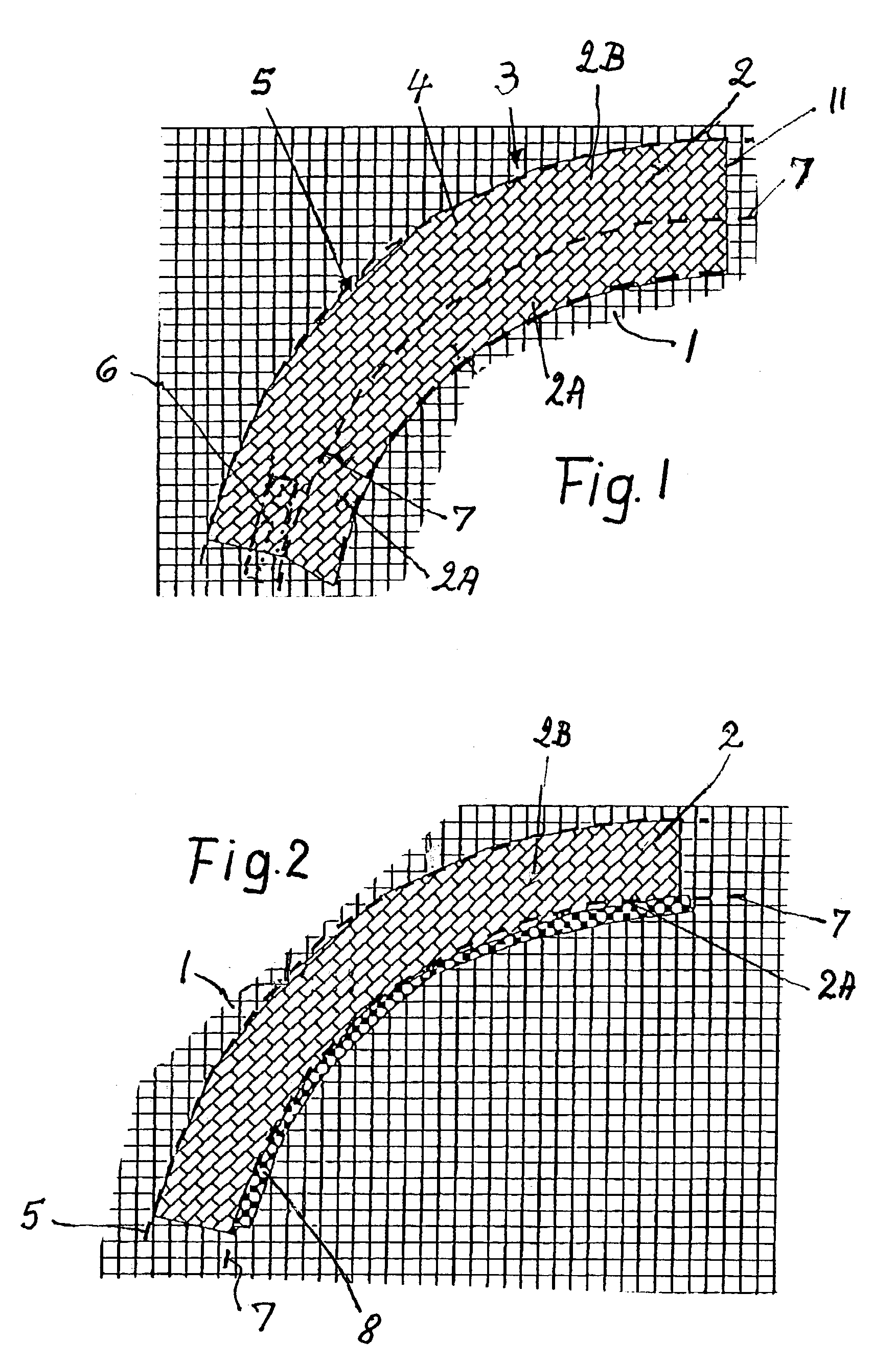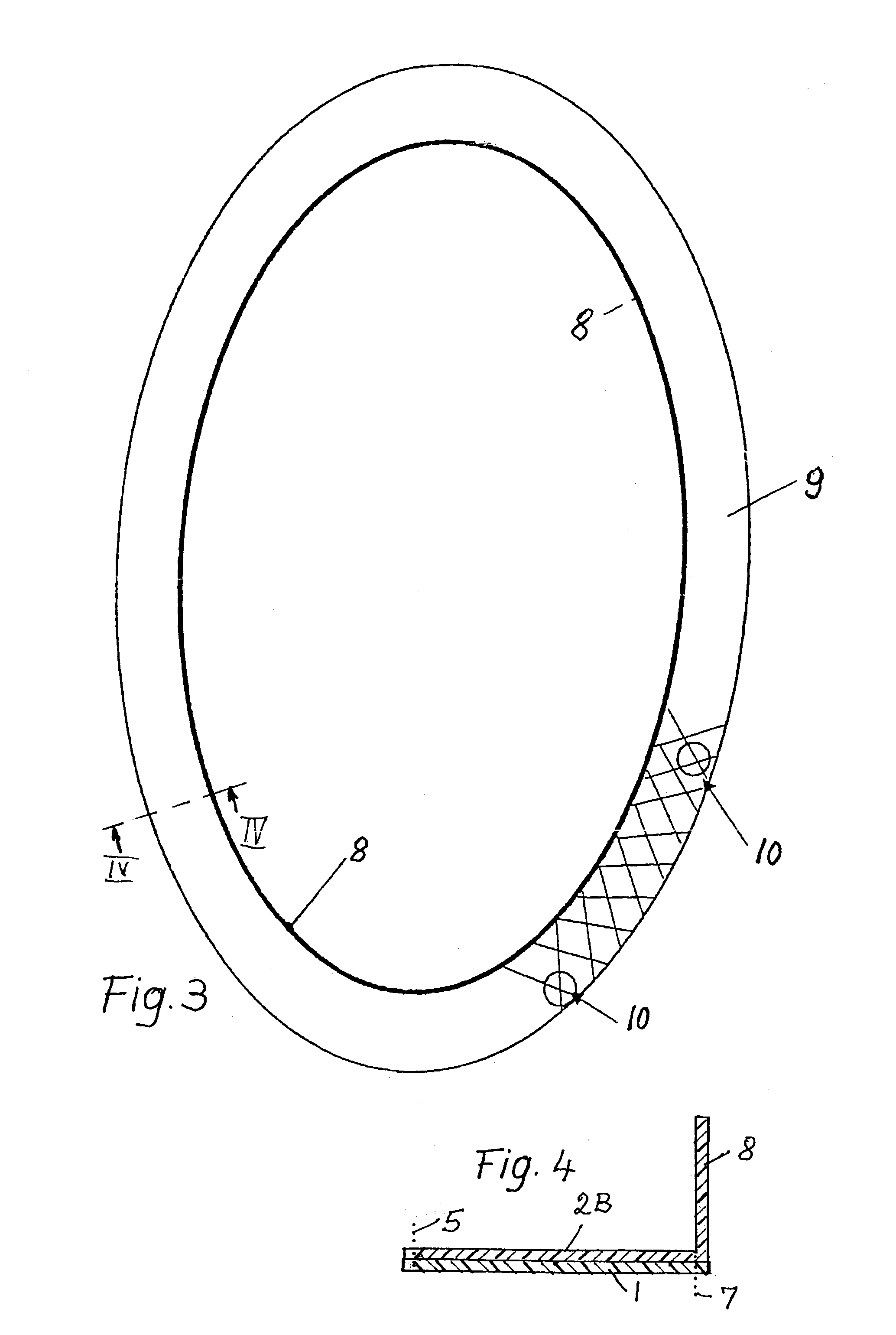Method for producing a three-dimensional fiber reinforced ring frame component
a three-dimensional fiber and ring frame technology, applied in the direction of braids, other domestic articles, transportation and packaging, etc., can solve the problems of low mechanical characteristics of short fiber prepreg, uneconomical sustainable production conditions, and inability to produce economically. achieve the effect of ensuring the stability of the finished frame, and precise positioning of the substrate and ribbon material
- Summary
- Abstract
- Description
- Claims
- Application Information
AI Technical Summary
Benefits of technology
Problems solved by technology
Method used
Image
Examples
Embodiment Construction
[0023]FIG. 1 shows a carrier material 1 cut off from a woven fiber mesh fabric such as glass fiber material or carbon fiber material. The shown square fiber orientation is preferred, but other fiber mesh orientations are also feasible, provided the strength requirements are satisfied. The carrier material 1 defines a plane that coincides or extends in parallel with the plane of the drawing sheet. A drapable or deformable fiber material 2 preferably a ribbon material that is secured to a substrate formed by the carrier material 1 by sewing or stitching along a stitching line 7 that also becomes a folding and securing line as will be described in more detail below. The deformable or drapable fiber material 2 is preferably a circularly woven hose material that can be flattened down in part and draped or folded in part without disturbing the given fiber orientation of such a fiber fabric. It will be noted that the stitching or folding line 7 divides the ribbon material into two sections...
PUM
| Property | Measurement | Unit |
|---|---|---|
| angle | aaaaa | aaaaa |
| structure | aaaaa | aaaaa |
| shape | aaaaa | aaaaa |
Abstract
Description
Claims
Application Information
 Login to View More
Login to View More - R&D
- Intellectual Property
- Life Sciences
- Materials
- Tech Scout
- Unparalleled Data Quality
- Higher Quality Content
- 60% Fewer Hallucinations
Browse by: Latest US Patents, China's latest patents, Technical Efficacy Thesaurus, Application Domain, Technology Topic, Popular Technical Reports.
© 2025 PatSnap. All rights reserved.Legal|Privacy policy|Modern Slavery Act Transparency Statement|Sitemap|About US| Contact US: help@patsnap.com



